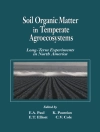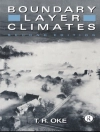This textbook is a first-look at radiative transfer in planetary atmospheres with a particular focus on the Earth’s atmosphere and climate. It covers the basics of the radiative transfer of sunlight, treating absorption and scattering, and the transfer of the thermal infrared. The examples included show how the solutions of the radiative transfer equation are used to evaluate changes in the Earth?s energy budget due to changes in atmospheric composition, how these changes lead to climate change, and also how remote sensing can be used to probe the thermal structure and composition of planetary atmospheres. The examples motivate students by leading them to a better understanding of and appreciation for the computer-generated numerical results.
Aimed at upper-division undergraduates and beginning graduate students in physics and atmospheric sciences, the book is designed to cover the essence of the material in a 10-week course, while the material in the optional sections will facilitate its use at the more leisurely pace and in-depth focus of a semester course.
Daftar Isi
SIMPLE MODELS FOR THE RADIATIVE HAETING OF THE EARTH AND ITS ATMOSPHERE
Introduction
Radiative Heating of the Atmosphere
Global Energy Budget
The Window-Gray Approximation and the Greenhouse Effect
Climate Sensitivity
Radiative Time Constant
Radiation and the Earth’s Global Mean Vertical Temperature Profile
Radiative Forcding Leads to Circulation
RADIATION AND ITS SOURCES
Basic Properties of Electromagnetic Wave
Wave-Particle Duality of Light
Blackbody Radiation
Incident Sunlight
TRANSFER OF RADIATION IN THE EARTH’S ATMOSPHERE
Cross Sections
Extinction Cross Section and Scattering Phase Function
Atmospheric Optical Phenomena Related to Light Scattering
Equation of Radiative Transfer
Transfer Equation for Solar Radiation
Transfer Equation for Terrestrial Radiation
SOLUTIONS TO THE EQUATION OF TRANSFER
Formal Solution to the Equation of Transfer
Solution for Thermal Emission
Solution for Scattering and Absorption
Single-Scattering Approximation
Fourier Decomposition of the Transfer Equation
Eddington Approximation for Scattering and Absorbing Atmosphere
Adding Layers in the Eddington Approximation
Adding a Surface with a Nonzero Albedo in the Eddington Approximation
Clouds in the Thermal Infrared
Diffusivity Factor
TREATMENT OF MOLECULAR ABSORPTION IN THE ATMOSPHERE
Absorption by Molecules
Molecular Absorption Lines and Line Shapes
Molecular Absorption Spectra
Distribution of Line Strengths for a Vibration Rotation Band
Absorption by a Single, Weak Absorption Line
Absorption by a Single, Strong, Pressure-Broadened Line
Inhomogeneous Ppaths
Bands of Isolated Lines
Approximate Treatments for Overlapping Lines
Exponential Sum-Fit and Correlated-K Methods
ABSORBTION OF SOLRA RADIATION IN THE EARTH’S ATMOSPHERE
Absorption of UV and Visible Sunlight by Ozone
Absorption of Sunlight by Water Vapor
SIMPLIFIED ESTIMATES OF EMISSION
Emission in the 15-?m band of CO2
Change in Emitted Flux Due to a Doubling of CO2
Change in Stratospheric Temperature Due to a Doubling of CO2
APPENDICES
Solving Differential Equations
Integrals of the Planck Function
Compilation of Line Parameters for Random Band Models
Absorption Cross Sections for Ozone and Oxygen at Ultraviolet and Visible Wavelengths
Tentang Penulis
Professor James Coakley received his degrees in Physics: B.S. (1968) UCLA, and MA (1970) and Ph D (1972) Berkeley. He entered the atmospheric sciences in 1972 as a Postdoctoral Fellow in the Advanced Study Program at the National Center for Atmospheric Research (NCAR) and stayed at NCAR in various staff scientist positions until moving to Oregon State University in 1988 where he is currently a Professor of Atmospheric Sciences in the College of Oceanic and Atmospheric Sciences. His research focuses on the problem of climate change and in particular on the remote sensing of aerosol and cloud properties from satellites, and the effects of aerosols and clouds on the Earth’s energy budget and climate. Dr. Coakley is a Fellow of the American Meteorological Society and the American Association for the Advancement of Science. He has served on editorial advisory board for Tellus, as an Associate Editor for the Journal of Geophysical Research, and as Editor for the Journal of Climate. He has also served on various panels for the National Research Council and as a member for two of the Council’s standing committees: Meteorological Analysis, Prediction, and Research and Climate Research.
Professor Ping Yang received the B.S. (theoretical physics) and M.S. (atmospheric physics) degrees from Lanzhou, China, in 1985 and 1988, respectively, and the Ph.D. degree in meteorology from the University of Utah, Salt Lake City, USA, in 1995. He is currently a professor and the holder of the David Bullock Harris Chair in Geosciences, the Department of Atmospheric Sciences, Texas A&M University, College Station, Texas, USA. His research interests cover the areas of remote sensing and radiative transfer. He has been actively conducting research in the modeling of the optical and radiative properties of clouds and aerosols, in particular, cirrus clouds, and their applications to space-borne and ground-based remote sensing. He has co-authored more than 160 peer-reviewed publications. He received a best paper award from the Climate and Radiation Branch, NASA Goddard Space Center in 2000, the U.S. National Science Foundation CAREER award in 2003, and the Dean’s Distinguished Achievement Award for Faculty Research, College of Geosciences, Texas A&M University in 2004. He is a member of the MODIS Science Team and. He currently serves as an associate editor for the Journal of Atmospheric Sciences, the Journal of Quantitative Spectroscopy & Radiative Transfer, and the Journal of Applied Meteorology and Climatology.












